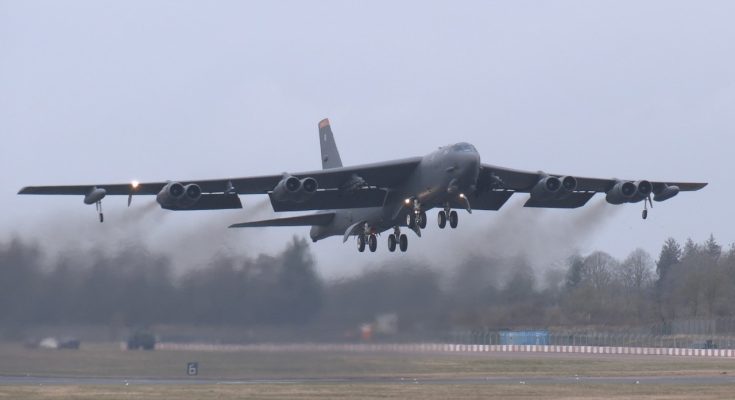B-52 Bomber Deployment in Europe: Purpose and Objectives
The B-52s were deployed to Europe as part of the Bomber Task Force 25-2 (BTF 25-2) mission, a program designed to:
✈ Enhance NATO coordination – The U.S. Air Force conducted joint training missions with European allies, including the UK, Germany, and Norway.
✈ Demonstrate deterrence – The presence of strategic bombers served as a warning to potential adversaries, particularly Russia.
✈ Maintain strategic readiness – The B-52 crews performed simulated strike missions, aerial refueling, and reconnaissance exercises to ensure operational flexibility.
During their deployment, the bombers conducted high-profile missions over the Arctic and Eastern Europe, working closely with NATO air forces to improve interoperability.
Why Are the B-52 Bombers Leaving Europe?
While their departure was scheduled as part of their rotational mission, several factors could have influenced the timing:
Mission Completion – The BTF exercises were successfully executed, and the aircraft are now returning to their home base in the U.S. for maintenance and readiness training.
Geopolitical Considerations – With Russia’s ongoing military activities in Eastern Europe, the U.S. may be adjusting its strategic focus, possibly shifting bomber deployments to the Indo-Pacific region.
Budget & Resource Management – Keeping B-52s in Europe is expensive. The U.S. rotates its bomber fleets strategically to ensure cost-effective force projection.
Although the B-52s are leaving, this doesn’t signal a permanent reduction in U.S. presence in Europe. Future BTF missions will likely see them return for further deterrence and allied training.
What’s Next for NATO Air Power?
With the B-52s gone, NATO still maintains a strong air defense presence in Europe, including:
✔ F-35 Lightning II & F-16 Fighting Falcons – Deployed across multiple NATO nations.
✔ B-1B Lancer & B-2 Spirit Rotations – Future bomber task force deployments may include these advanced bombers.
✔ European Air Forces – Countries like the UK, Germany, and France continue to strengthen their own aerial defense capabilities.
The U.S. has reaffirmed its commitment to NATO air defense, and the return of B-52 bombers or other strategic assets is just a matter of time.
Final Thoughts: A Temporary Departure, Not a Withdrawal
The departure of B-52 bombers from Europe is part of a regular strategic rotation, not a sign of reduced U.S. commitment to NATO. While their presence was an important deterrent against adversaries, NATO remains well-equipped with modern fighters, missile defense systems, and allied support.



